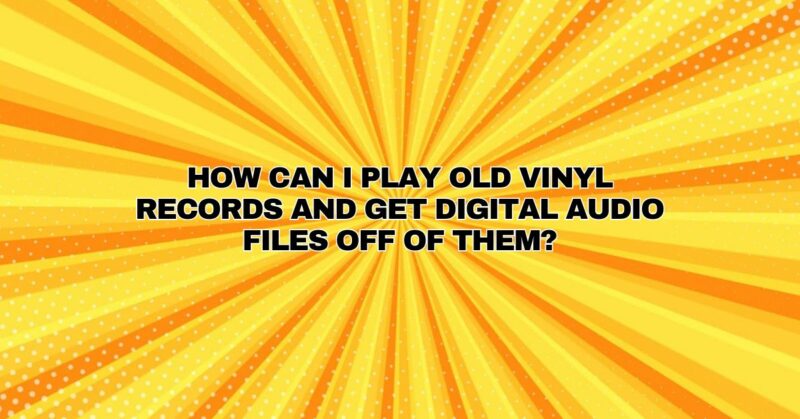Vinyl records, with their warm analog sound and tactile appeal, hold a special place in the hearts of many music enthusiasts. While vinyl remains a beloved format, the convenience and portability of digital audio have led to a growing interest in digitizing vinyl records. In this comprehensive article, we will explore the process of playing old vinyl records and extracting digital audio files from them, preserving both the nostalgia of vinyl and the convenience of digital playback.
Part 1: Playing Old Vinyl Records
Before you can digitize your vinyl records, you need to play them. Here are the steps to set up your turntable for playback:
Step 1: Setting Up the Turntable
- Place Your Turntable: Position your turntable on a stable surface away from sources of vibration and electromagnetic interference.
- Connect the Turntable: Connect the turntable’s output cables (usually RCA) to the phono input of your amplifier or a dedicated phono preamp if your amplifier lacks one.
- Ground Wire: If your turntable has a ground wire, connect it to the grounding terminal on your amplifier or phono preamp.
Step 2: Placing the Record
- Dust Off the Vinyl: Use a carbon fiber brush or an anti-static brush to remove dust and debris from the record’s surface.
- Set the Speed: Ensure that your turntable is set to the correct speed (e.g., 33 1/3 or 45 RPM) for the record you’re playing.
- Lift the Tonearm: Gently lift the tonearm and place it above the start of the record’s grooves.
- Lower the Tonearm: Carefully lower the tonearm onto the record using the cueing lever if your turntable has one.
- Enjoy the Music: Sit back, relax, and enjoy the analog warmth of your vinyl record.
Part 2: Digitizing Vinyl Records
Now that you’ve enjoyed your vinyl, let’s explore how to digitize the audio for convenient digital playback and archiving. This process involves recording the vinyl’s audio and saving it as digital files on your computer. Here’s how:
Step 1: Gather Equipment
- Computer: You’ll need a computer with audio recording software installed.
- Audio Interface: If your turntable doesn’t have a built-in USB output, you’ll need an audio interface with a phono preamp to connect your turntable to the computer.
- Cables: Ensure you have the necessary cables to connect your turntable and audio interface to your computer.
Step 2: Connect and Configure
- Connect Your Turntable: Connect your turntable to the audio interface using RCA cables.
- Connect the Audio Interface: Connect the audio interface to your computer via USB or another suitable connection.
- Configure the Software: Open your audio recording software and configure it to recognize the audio interface as the input source.
Step 3: Record the Audio
- Choose a File Format: Select the file format (e.g., WAV or FLAC) and audio quality settings for your recordings. Higher-quality settings yield larger files but better audio quality.
- Start Recording: Start the recording software, press play on your turntable, and allow the software to capture the audio in real-time.
- Monitor the Levels: Ensure that the recording levels are not too high to prevent distortion or too low to maintain clarity.
- Stop and Save: After recording the entire vinyl side, stop the recording software and save the audio file with an appropriate name and metadata.
Step 4: Edit and Export
- Edit Audio: Use audio editing software to trim any unwanted silence or noise from the beginning and end of the recording.
- Export and Convert: Export the edited audio to your desired digital audio format (e.g., MP3, FLAC, or WAV) for playback on various devices.
Conclusion
Digitizing old vinyl records is a rewarding way to preserve your cherished vinyl collection while enjoying the convenience of digital playback. By following these steps to play your records and record them as digital audio files, you can bridge the analog-digital divide and ensure that your favorite music remains accessible for years to come.


